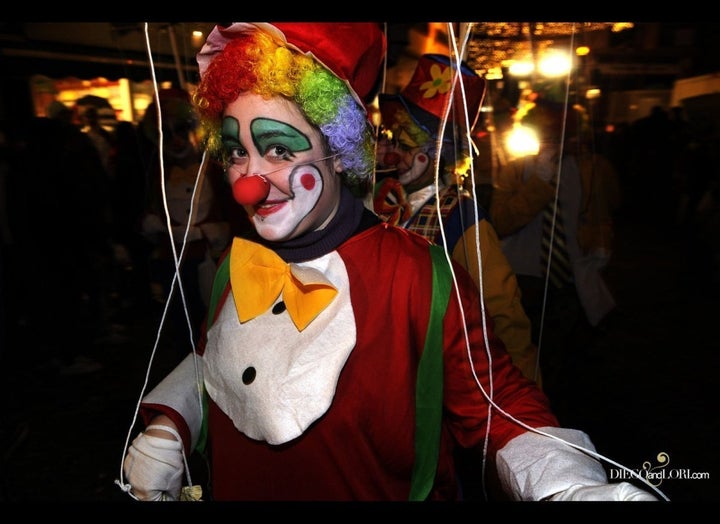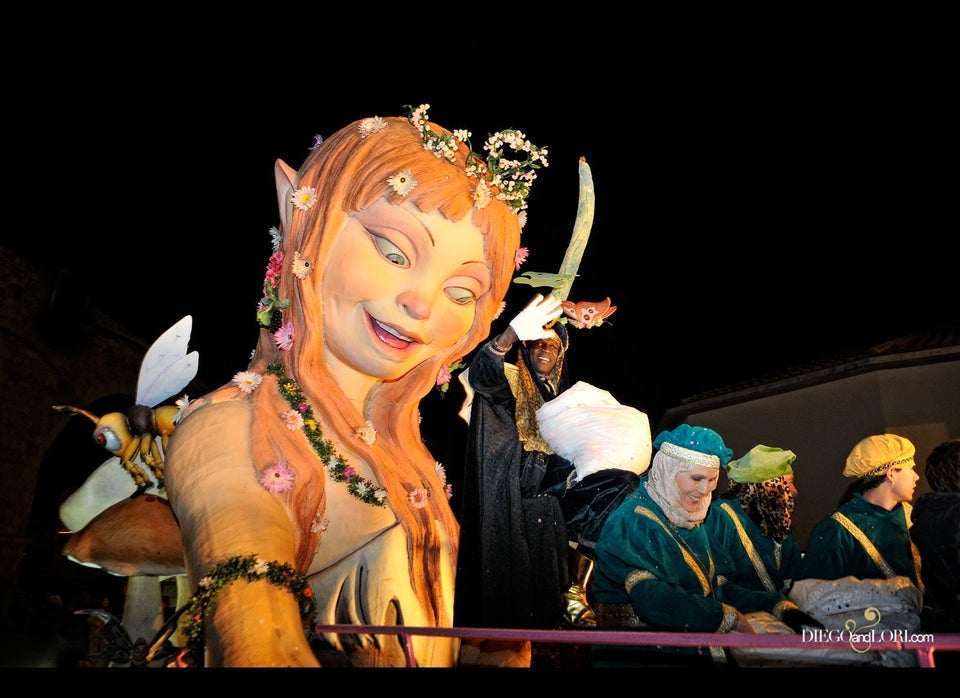
El Día de Los Reyes Magos (The Day of the Three Kings) is the most anticipated holiday of the year for Spanish children. Also known as Epiphany, it's celebrated 12 days after Christmas and marks the day Los Reyes Magos, the Three Kings from the East, brought gold and gifts to the newly-born Baby Jesus. Although in Spain, it's the eve of January 5 that is eagerly awaited, for it is the day Los Reyes Magos return to Spain and gifts are given to children across the land.
- Melchior: A master astrologer and King of Persia, he is represented by light skin and a white beard. Melchior is the oldest and wisest, and is known to represent adulthood and carries gold.
- Gaspar: This King, also known as Caspar, comes from India, and is represented by a dark or red beard and carries incense. He loves the ocean, rivers and lakes.
- Balthasar: This dark-skinned Arabian King carries myrrh. He represents youth or the human side of man, as myrrh used to be presented at funerals.
January 5: Cabalgata de Los Reyes Magos Parade
On January 5, the night before Epiphany, Spaniards celebrate with a big parade called Cabalgata de Los Reyes Magos. In various cities across Spain in the late afternoon, the Three Kings arrive by boat, train, horses or floats and make their way through the city. Children dress up in costumes and join them on the floats, throwing candies and small toys to the children waiting along the roadside with their families. Here is a list of some places you can see the Cabalgata de Los Reyes Magos Parade:
- Madrid: A traditional Three Kings parade makes its way from Nuevos Ministerios to the Cibeles Square through the city center and to the Plaza Mayor. At the Plaza Mayor you will find many activities for children. You can find more info at Madrid's Visitors Bureau website.
- Barcelona: Known as Cavalcada dels Reis Mags in Barcelona, this spectacular celebration of The Great Journey of the Three Kings starts with the arrival by sea at the Moll de La Fusta port and ends in the city center. Their arrival is celebrated with a firework display and a gun salute. Check out the dynamic Barcelona City Hall's website, which shows in real-time the Three Kings journey from the Far East to Barcelona.
- Valencia: Beginning in the late afternoon at the port of Valencia, children, floats and dancers travel the streets until they meet at the Plaza de Ayuntamiento (City Hall) where they open the doors to the kids waiting to receive presents from the Three Kings. Here is more information at Valencia's City Hall website.
- Zaragoza: This year, the Three Kings will arrive by train at the Estación de Cercanías Goya and then make their way along Calle Alfonso I to the Plaza del Pilar.
- Alcoy, Valencia: Since 1866, Alcoy has celebrated the arrival of the Los Reyes Magos. Known to be one of the oldest cabalgatas, today it is celebrated with traditional music, dances and a reenactment of the birth of Baby Jesus. The Kings' pages distribute gifts to the local children who wrote to the Reyes by climbing the facades of buildings using ladders in the city center. It finishes with a magnificent firework display. If you get a chance, don't miss this event! Watch this spectacular video here.
- Other towns and villages: Alicante, Cadiz, Malaga, Mallorca, Menorca, Seville, Teruel and more... Ask your hotel which cities or villages near you will be celebrating with a parade. Smaller towns usually have their own celebration and they're more accessible.
January 6: Three Kings Day/El Día de Los Reyes
Traditional Meal
Some families have a traditional feast of seafood and meat after the parade ends on January 5, while others have lunch together on January 6. Children wait with excitement for a special dessert called Roscón de Reyes. This large ring-shaped cake is filled with a thick layer of cream, nuts and cherries. It's cut into pieces and handed out to everyone. Baked inside is one toy that brings good luck for the new year. Also inside is a small bean, which if received, means you'll have to pay for the pricey Roscón. It always leads to a good laugh.
Lots of Presents
In Spain, children don't write a wish list and send it to Papá Noel (Santa Claus) -- they write to the Three Kings. It's actually on el Día de Los Reyes that children receive most of their gifts; only a few are given at Christmas. Children wake to the presents delivered during the night by the Three Kings.
So, which Rey is your favorite: Balthasar, Gaspar or Melchior? Share your opinion in the Quick Poll.
-- Lori Needleman
You Might Also Like:
How to Spend Christmas in Spain
Spain's Buffet Of New Year's Celebrations
